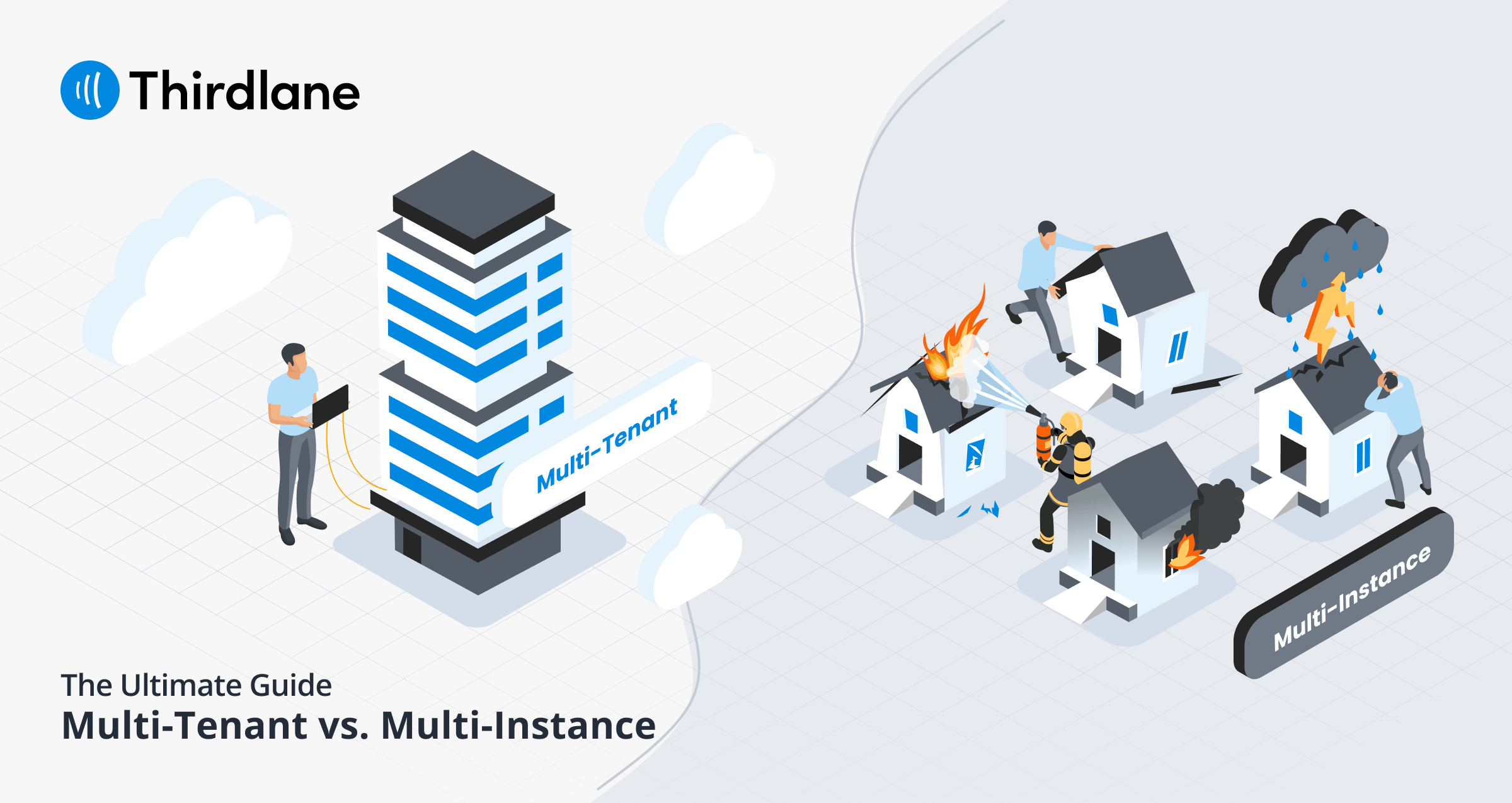For Managed Service Providers (MSPs) and Unified Communications as a Service (UCaaS) providers, selecting the right platform architecture is critical for growth, efficiency, and profitability. Misleading vendor claims often blur the lines between multi-tenant and multi-instance systems, leading to costly decisions. As a provider of true multi-tenant solutions since 2006, we’ve seen vendors falsely equate multiple single-tenant instances with genuine multi-tenancy. In reality, these are fundamentally different approaches with profound impacts on scalability, costs, and operations.
This guide clarifies the differences, debunks common vendor myths, and provides a practical checklist to evaluate platforms, ensuring you choose a solution built for your business—not just your first client.

Understanding the Basics
Imagine a multi-tenant platform as a high-rise apartment building 🏢: each tenant has a secure, private unit but shares centralized, professionally managed utilities (e.g., power, water). A single maintenance team handles the entire building, optimizing efficiency and scalability.
In contrast, a multi-instance setup is like a neighborhood of standalone houses 🏡: each house has its own utilities, requiring individual maintenance. This approach is resource-heavy and not designed for scale.
- Multi-Tenant: A single platform hosts multiple customers with robust data isolation and shared services. One update benefits all tenants instantly.
- Multi-Instance: Each customer runs on a separate software instance, requiring individual updates, configurations, and monitoring.
Why Multi-Tenancy Matters
Multi-tenancy was designed to overcome the limitations of traditional single-instance or on-premise software, delivering cost efficiency, operational simplicity, and scalability. Here’s why it’s the gold standard for modern SaaS platforms:
1. Cost Efficiency & Economies of Scale
By sharing infrastructure (servers, databases, licensing), multi-tenant platforms drastically reduce costs. Instead of provisioning dedicated resources for each customer, vendors leverage shared resources, making software more affordable for you and your clients while boosting profitability.
2. Streamlined Operations
Managing thousands of individual instances is a logistical nightmare. Multi-tenancy centralizes updates, security patches, and bug fixes. A single platform update benefits all tenants instantly, freeing your team to focus on innovation rather than repetitive maintenance.
3. Faster Innovation & Scalability
Multi-tenancy powers the SaaS model by enabling rapid onboarding of new customers. Adding a tenant is a simple administrative task, not a weeks-long provisioning process. This allows you to scale quickly and deliver new features to all clients simultaneously.
The Pitfalls of Multi-Instance Systems
Multi-instance setups may seem viable with a small client base, but they become unmanageable as you grow. Key challenges include:
- Operational Overhead: Applying updates or patches across multiple instances is manual and time-consuming. A 10-minute update for 100 clients takes 16+ hours in a multi-instance setup, compared to under 45 minutes in a multi-tenant system.
- Resource Inefficiency: Each instance requires dedicated CPU, RAM, and storage, leading to wasted resources when underutilized.
- Configuration Chaos: Divergent configurations across instances complicate troubleshooting and maintenance.
- Fragmented Data: Unified analytics are nearly impossible; you must manually aggregate data from separate dashboards.
- Security Risks: Manual separation of instances is prone to human error, unlike multi-tenant systems with built-in isolation via namespaces and Role-Based Access Control (RBAC).
Spotting Fake Multi-Tenant Solutions
Some vendors misrepresent their platforms as multi-tenant to appear competitive. Here are two common deceptions to watch for:
1. The "It's Almost the Same" Lie
Vendors may claim that multiple single-instance deployments are equivalent to multi-tenancy. This is false. Multi-instance setups lack the automation, resource sharing, and unified control of true multi-tenant systems, leading to higher costs and operational complexity.
2. The False Multi-Tenant Claim
Some vendors retrofit single-tenant systems with basic partitioning (e.g., tenant IDs), calling it multi-tenant. A quick test: ask if two customers can use the same extension number (e.g., "101"). In a true multi-tenant system, each tenant operates in an isolated namespace, allowing identical extensions or dial plans without conflicts. If the vendor requires unique extensions across all customers, their platform is not truly multi-tenant.
Your Vendor Evaluation Checklist
Use this checklist during vendor demos to verify true multi-tenant capabilities. Insist on live demonstrations, not just promises.
Management & Automation
- Centralized Control: Can you create a new tenant (not a separate instance) and configure admin roles/quotas via a single API?
- Upgrades: Is there a single, tested upgrade path for all tenants? Can you demonstrate a rollback procedure?
- Automation: Show how the platform automates tenant creation, suspension, and number porting.
Security & Control
- True Isolation: How are per-tenant namespaces enforced to prevent conflicts (e.g., extensions, DIDs, dial plans)?
- Data Protection: How does the platform prevent cross-tenant data leaks? Show audit logs and key rotation for tenant-scoped APIs.
- User Roles: Demonstrate granular role creation with limited visibility for staff and customers.
Scalability & Reselling
- Unified Visibility: Can you show a single dashboard with insights across all tenants and tenant-specific metrics?
- Resource Management: How are per-tenant limits (e.g., channels, messaging, storage) set and monitored?
- Customization: Demonstrate white-label branding capabilities for your brand and resellers.
🚩 Red Flags: If the vendor emphasizes deploying separate instances per client or struggles to answer these questions, their platform is likely not multi-tenant.
Conclusion
A multi-instance setup may suffice for small-scale operations, but it will hinder growth, inflate costs, and complicate management. A true multi-tenant platform, built from the ground up for MSPs and UCaaS providers, delivers efficiency, security, and scalability to support your long-term success.
Since 2006, Thirdlane has provided a robust multi-tenant platform tailored for MSPs and UCaaS providers. With centralized updates, comprehensive analytics, and seamless automation, it empowers you to scale confidently and focus on growing your business.